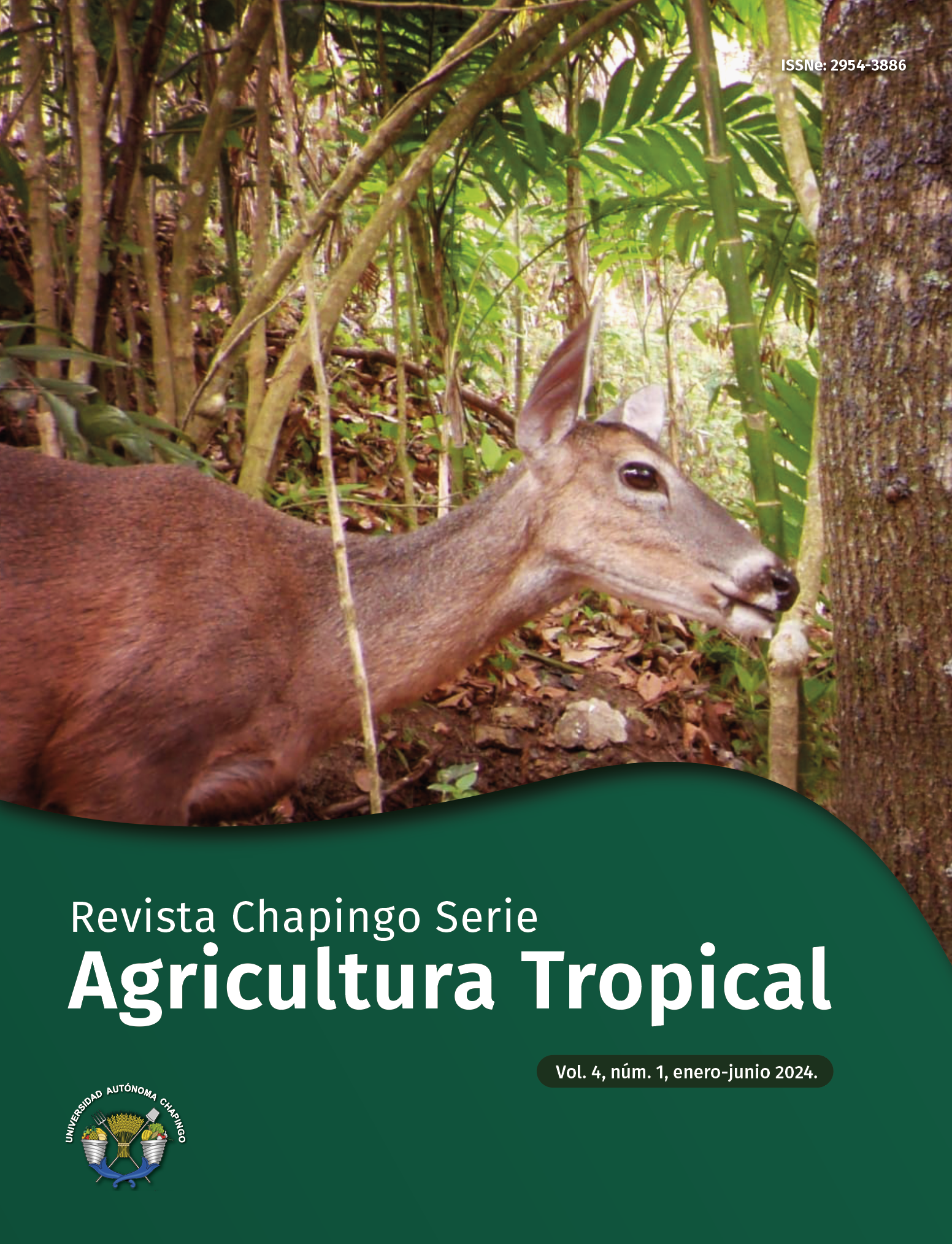Abstract
In 2022, Mexico produced 4 578.68 t of hungarian creole xkat iik green pepper in an area of 208.20 ha with a production value of more than 73 801 921.00 pesos; while, in Yucatan, 59.20 ha were harvested, with a total production of 727.85 t, which contributes 15.89% of the national production. The objective of this study was to evaluate the effect of different doses of chemical fertilization on growth and yield of xkat iik pepper under micro tunnel production system in the southern region of the state of Yucatan. A completely randomized experimental block design with four treatments and four replications per treatment was used. To determine the effect of the treatments on variables studied, fruit length, fruit equatorial diameter, number of fruits per plant, and fruit weight per plant, an ANOVA was applied, and for the comparison of means, the Tukey test was used (P <0.05). There was no significant statistical difference between the variables fruit length, fruit equatorial diameter and number of fruits per plant, while for the variable fruit weight per plant there was a significant statistical difference. Specifically T1 (1 L·ha-1 of multi-chelated iron complex, 5 kg·ha-1 of 13-40-13, 2 kg·ha-1 of 19-19-19 and 0.4 L·ha-1 fulvic substances) had the best result with a value of 673.33 g, which corresponds to a value of 16.83 t·ha-1, exceeding the control (10 kg·ha-1 of 11-00-00- 16 MgO and 10 kg·ha-1 of 11-52-00) by almost 35 %. Foliar fertilization at doses of 1-2 L·ha-1 Poliquel multi (multi-chelated iron complex), 5-10 kg·ha-1 of violet (13-40-13), 2-4.5 kg·ha-1 polyfeed (19-19-19) and 0.4-0.5 L·ha-1 of k-thionic (fulvic substances) improved the yield of xkat iik pepper.
References
Aguirre Hernández, E., y Muñoz Ocotero, V. (2015). El chile como alimento. Ciencia. 66 (3), 16-23. Disponible en https://www. revistaciencia.amc.edu.mx/index.php/vol-66-numero-3/603- el-chile-como-alimento [Acceso: 11 de julio de 2022]
Comisión Nacional del Agua - CONAGUA (2019). Reporte del clima en México. Recuperado: https://smn. conagua.gob.mx/tools/DATA/Climatolog%C3%ADa/Diagn%C3%B3stico%20Atmosf%C3%A9rico/Reporte%20del%20Clima%20en%20M%C3%A9xico/Anual2019. pdf (2 de mayo 2023)
FAO (Organización de las Naciones Unidas para la Alimentación y la Agricultura), (2020). FAOSTAT-Producción agrícola. Disponible en https://www.fao.org/faostat/es/#data/QCL [Acceso: 24 de junio de 2022]
Hernández-Pérez, M., López-Benítez, A., Rodríguez-Herrera, S. A., Borrego-Escalante, F., Ramírez- Meraz, M., & López-Benítez, S. R. (2011). Análisis conglomerado de 15 cruzas de chile para variables fenológicas y de rendimiento. Agronomía mesoamericana. 22(1):45-50. Recuperado en https://www. scielo.sa.cr/pdf/am/v22n1/a06v22n1.pdf [Acceso: 21 de febrero de 2024]
Millán C. (2008). Las plantas: una opción saludable para el control de plagas.
Moreno R. A., Rodríguez D. N., Reyes C. J. L., Márquez Q. C., & Reyes G. J. (2014). Comportamiento del chile húngaro (Capsicum annum) en mezclas de vermicompost-arena bajo condiciones protegidas. Rev. FCA UNCUYO 46(2): 97- 111. Disponible en https://www.redalyc.org/articulo. oa?id=382837658012 [Acceso: 19 de agosto de 2022]
Ramos Gourcy, Fernando; Aguilar Rubalcava, Juan Antonio; López Gutiérrez, Mario Alejandro; Ochoa Fuentes, Yisa María; & Vázquez Martínez, Otilio. 2011. Efecto de abonos orgánicos en el rendimiento del cultivo de chile ancho (Capsicum annuum L.), y sobre las características químicas del suelo de la parcela experimental. Investigación y Ciencia. 19 (51): 3-9. Disponible en: https://www.redalyc.org/pdf/674/67418397001.pdf
Rubio, S. A., Alfonso, A. M., Grijalba, C. M., & Pérez, M. M. (2014). Determinación de los costos de producción de la fresa cultivada a campo abierto y bajo macrotúnel, Revista Colombiana de Ciencias Hortícolas, 8(1), pp. 67-79. doi: 10.17584/rcch.2014v8i1.2801.
Servicio de Información Agroalimentaria y Pesquera (SIAP). (2022). Sistema de Información Agroalimentaria y de Consulta (SIACON). Bases de Datos 1980 – 2022. México: SIAP.
Servicio de Información Agroalimentaria y Pesquera (SIAP) (2020). Panorama agroalimentario 2020. México: SIAP. Disponible en https://www.gob.mx/siap/documentos/siacon-ng-161430 Acceso: 24 de junio de 2022]
Secretaría de Economía. NMX-FF-025-SCFI-2014. (2014). Productos alimenticios no industrializados para consumo humano - chile fresco (Capsicum spp.) – especificaciones (cancela a la NMX-FF-025-SCFI-2007) Disponible en http://www.economia-nmx. gob.mx/normas/nmx/2010/nmx-ff-025-scfi-2014.pdf
Tlelo-Cuautle Ana M., Taboada-Gaytán Oswaldo R., Cruz-Hernández Javier, López-Sánchez Higinio & A. López Pedro. 2020. Efecto de la fertilización orgánica y química en el rendimiento de fruto de chile poblano. Revista Fitotecnia Mexicana. 43 (3): 283 – 289. Disponible en https://www.scielo.org.mx/pdf/rfm/ v43n3/0187-7380-rfm-43-03-283.pdf

This work is licensed under a Creative Commons Attribution-NonCommercial 4.0 International License.
Copyright (c) 2024 Revista Chapingo Serie Agricultura Tropical




